Bengal tiger (Panthera tigris tigris)
Beautiful and dangerous night hunter, in danger of extinction. Bengal Tiger is one of the greatest representatives of big cats. The Bengal tiger is the most famous of all tiger species. Endangered, the Bengal tiger is Bangladesh’s national animal. Conservationists are trying to save the species, but the biggest challenges for Bengal tiger populations remain humans. One of the oldest ancestors of the Bengal tiger is the saber-toothed tiger (Smilodon). They lived thirty-five million years ago. They are some of the earliest wild cat fossils found to date from twenty-five million years ago in Europe.
Some close relatives of the tiger are the leopard and jaguar. The oldest tiger fossils, two million years old, have been found in China. It is believed that Bengal tigers arrived in India about twelve thousand years ago, because no fossils of this animal have been found in the area until that time.
Classification
- Kingdom: Animalia
- Phylum: Chordata
- Class: Mammalia
- Order: Carnivora
- Family: Felidae
- Subfamily: Pantherinae
- Genus: Panthera
- Species: Panthera tigris
- Subspecies: Panthera tigris tigris

Population
The populations of the Bengal tiger have been estimated at 1,706–1,909 in India, 440 in Bangladesh, 163–253 in Nepal and 67–81 in Bhutan. Since 2010, it has been classified as an endangered species. The total population is estimated at fewer than 2,500 individuals with a decreasing trend, and none of the Tiger Conservation Landscapes within the Bengal tiger’s range is large enough to support an effective population size of 250 adult individuals.
Characteristics
Coat
The Bengal tiger’s coat is yellow to light orange, with stripes ranging from dark brown to black; the belly and the interior parts of the limbs are white, and the tail is orange with black rings.
Size
Male Bengal tigers have an average total length of 270 to 310 cm (110 to 120 in) including the tail, while females measure 240 to 265 cm (94 to 104 in) on average. The tail is typically 85 to 110 cm (33 to 43 in) long, and on average, tigers are 90 to 110 cm (35 to 43 in) in height at the shoulders. The average weight of males is 221.2 kg (488 lb), while that of females is 139.7 kg (308 lb). The smallest recorded weights for Bengal tigers are from the Bangladesh Sundarbans, where adult females are 75–80 kg (170–180 lb).
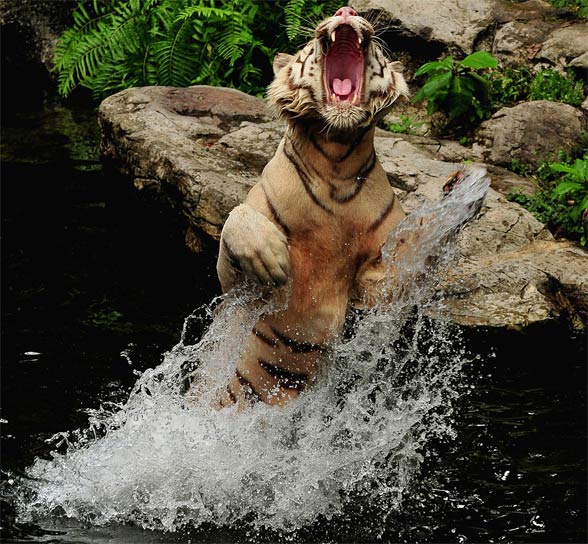
The biggest Bengal tigers
Two tigers shot in Kumaon and near Oude at the end of the 19th century allegedly measured more than 12 ft (370 cm). But at the time, sportsmen had not yet adopted a standard system of measurement; some would measure between pegs while others would round the curves.
At the beginning of the 20th century, a male Bengal tiger was shot in central India with a head and body length of 221 cm (87 in) between pegs, a chest girth of 150 cm (59 in), a shoulder height of 109 cm (43 in) and a tail length of 81 cm (32 in), which was perhaps bitten off by a rival male. This specimen could not be weighed, but it was calculated to weigh no less than 272 kg (600 lb).
A heavy male weighing 570 lb (260 kg) was shot in northern India in the 1930s. However, the heaviest known tiger was a huge male killed in 1967 that weighed 388.7 kg (857 lb) and measured 322 cm (127 in) in total length between pegs, and 338 cm (133 in) over curves. This specimen is on exhibition in the Mammals Hall of the Smithsonian Institution. In 1980 and 1984, scientists captured and tagged two male tigers in Chitwan National Park that weighed more than 270 kg (600 lb).

Distribution and habitat
In the Indian subcontinent, tigers inhabit tropical moist evergreen forests, tropical dry forests, tropical and subtropical moist deciduous forests, mangroves, subtropical and temperate upland forests, and alluvial grasslands. Latter tiger habitat once covered a huge swath of grassland and riverine and moist semi-deciduous forests along with the major river system of the Gangetic and Brahmaputra plains, but has now been largely converted to agriculture or severely degraded.
Today, the best examples of this habitat type are limited to a few blocks at the base of the outer foothills of the Himalayas.
- India (the total tiger population has been estimated at 1,411 individuals ranging from 1,165 to 1,657 adult and sub-adult tigers of more than 1.5 years of age)
- Bangladesh (as of 2004, population estimates in Bangladesh ranged from 200 to 419, mostly in the Sunderbans)
- Nepal (by 2010, the number of adult tigers had reached 155)
- Bhutan (the population in Bhutan is estimated at 67–81 individuals)
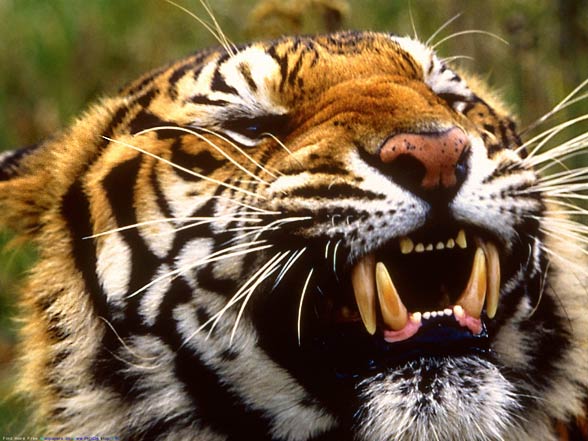
Hunting and victims
Tigers are carnivores. They prefer hunting large ungulates such as chital, sambar, gaur, and to a lesser extent also barasingha, water buffalo, nilgai, serow and takin. Among the medium-sized prey species, they frequently kill wild boar, and occasionally hog deer, muntjac and Gray langur. Small prey species such as porcupines, hares and peafowl form a very small part of their diet. Due to the encroachment of humans into their habitat, they also prey on domestic livestock.
In most cases, tigers approach their victim from the side or behind from as close a distance as possible and grasp the prey’s throat to kill it. Then they drag the carcass into cover, occasionally over several hundred meters, to consume it. The nature of the tiger’s hunting method and prey availability results in a “feast or famine” feeding style: they often consume 18–40 kilograms (40–88 lb) of meat at one time.
Bengal tigers have been known to take other predators, such as leopards, wolves, jackals, foxes, crocodiles, Asiatic black bears, sloth bears, and dholes as prey, although these predators are not typically a part of their diet. Adult elephants and rhinoceroses are too large to be successfully tackled by tigers, but such extraordinarily rare events have been recorded. The Indian hunter and naturalist Jim Corbett described an incident in which two tigers fought and killed a large bull elephant. If injured, old or weak, or their normal prey is becoming scarce, they may even attack humans and become man-eaters
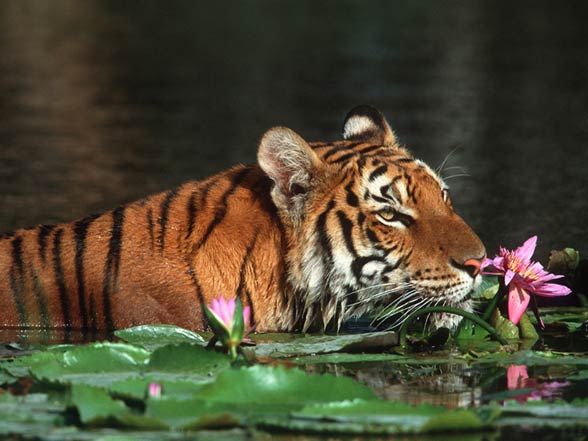
Reproduction and lifecycle
Males reach maturity at 4–5 years of age, and females at 3–4 years. A tigress comes into heat at intervals of about 3–9 weeks, and is receptive for 3–6 days. After a gestation period of 104–106 days, 1–4 cubs are born in a shelter situated in tall grass, thick bush or in caves. Newborn cubs weigh 780 to 1,600 g (1.7 to 3.5 lb) and they have thick wooly fur that is shed after 3.5–5 months.
Their eyes and ears are closed. Their milk teeth start to erupt at about 2–3 weeks after birth, and are slowly replaced by permanent dentition from 8.5–9.5 weeks of age onwards. They suckle for 3–6 months, and begin to eat small amounts of solid food at about 2 months of age. At this time, they follow their mother on her hunting expeditions and begin to take part in hunting at 5–6 months of age.
At the age of 2–3 years, they slowly start to separate from the family group and become transient — looking out for an area, where they can establish their own territory. Young males move further away from their mother’s territory than young females. Once the family group has split, the mother comes into heat again.
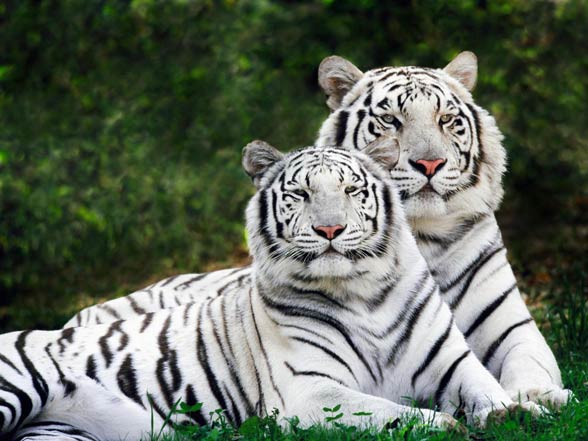
Human-tiger relationship and conflict
Tiger attacks are an extreme form of human-wildlife conflict, which occur for various reasons and have claimed more human lives than attacks by any of the other Big cats. The most comprehensive study of deaths due to tiger attacks estimates that at least 373,000 people died due to tiger attacks between 1800 and 2009, the majority of these attacks occurring in South and Southeast Asia.
In Southeast Asia, attacks gradually declined after peaking in the nineteenth century, but attacks in South Asia have remained high, particularly in the Sundarbans (the largest single block of tidal halophytic mangrove forest in the world – 6000 sq. km).
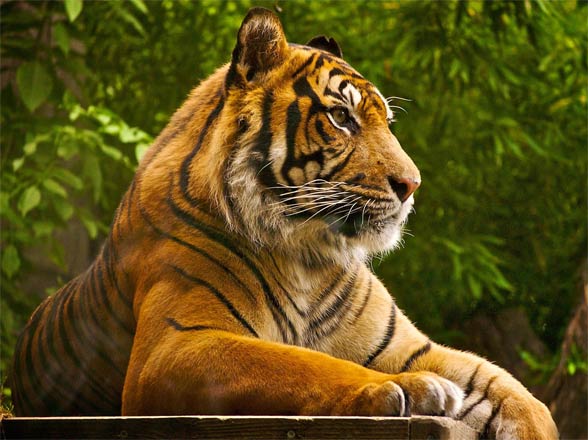
Data/Size
Bengal tiger (Panthera tigris tigris)
- Length:
- males: 270 – 310 cm (110 – 120 in), max. 370 cm (12 ft)
- females: 240 – 265 cm (94 – 104 in)
- Height: 90 – 110 cm (35 – 43 in)
- Tail: 85 – 110 cm (33 – 43 in)
- Weight: up to 325 kg (717 lb)
- males: 180 – 258 kg (397 – 569 lb), the heaviest Bengal tiger weighted 388.7 kg (857 lb) after meal (calf), and 325 kg (717 lb) before meal
- females: 100 – 160 kg (220 – 350 lb), on average 139 kg (307 lb).
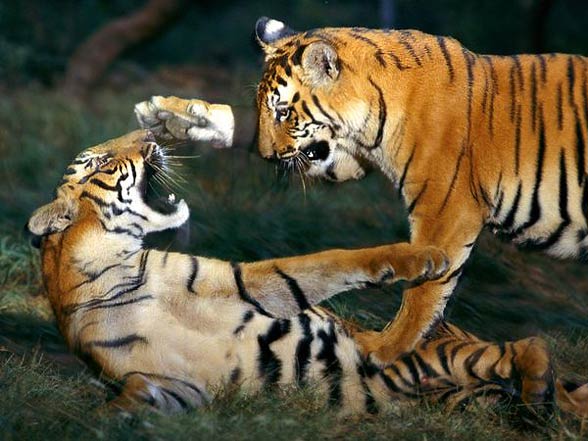
Bengal tiger – curiosities
- In 2010, the Bengal tiger was classified as an endangered species. The greatest threats are habitat destruction and poaching to get beautiful skins and other body parts.
The smallest Bengal tiger found weighed 75-80 kg (female). - Tiger eye is 6 times better than a human.
- The tiger’s hunting method, depending on the amount of food available, can be described with the phrase: “Feast or hunger” – in one fell swoop he can eat 18 – 40 kg of meat. After such a heavy meal, the pet may not eat for the next 3 weeks.
- The hunter and naturalist Jim Corbett described an incident in which two Bengal tigers killed a large elephant.
- Although the tiger is a forest predator, it does not climb trees.
- The Bengal tiger is the national animal of India and Bangladesh.
- Bangladeshi banknotes feature a tiger.
- The political party Muslim League of Pakistan uses the tiger as its election symbol.
- A tiger features on the logo of the Reserve Bank of India.
- German heavy tank Tiger II was informally known as Königstiger (German for Bengal tiger).
- The Bengal tiger has appeared many times in cinematography – most recently in the hit movie “Life of Pi” (2012). This film clearly shows that the tiger always remains a wild and dangerous cat, regardless of the situation, that can eat its guardian…
- Earlier this year in Mexico, during a circus performance, a Bengal tiger attacked his handler by stabbing his teeth into his neck. In front of the terrified spectators, he began to drag the trainer around the arena. It took a few minutes for the trainer’s assistants to drive the big cat away. Unfortunately, it was too late for the trainer … he died on the way to the hospital.
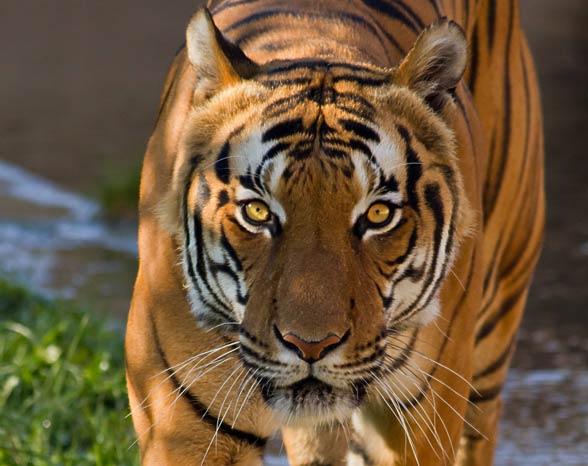
Recommended
- Siberian tiger
- Bengal tiger
- Sumatran tiger
- Indochinese tiger
- Malayan tiger
- Tigers
- White tigers
- Lions
- Barbary lion
- White lions
- Lion vs tiger
- Liger
- Animal fights
- American lion
- European cave lion
- Smilodon – Saber-toothed tiger
- Big cats
- Black panther
- Leopard
- Snow leopard
- African Lion
- Fastest animals
- Fastest birds

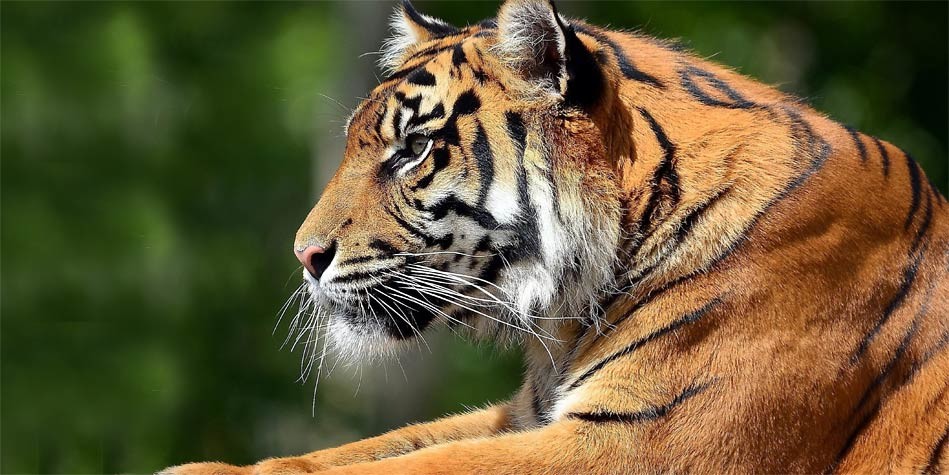





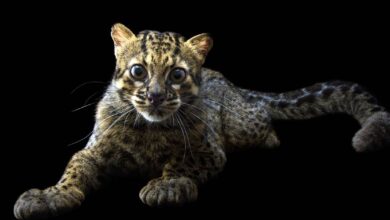







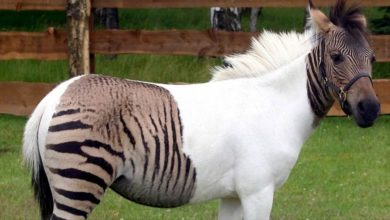



I alredy asked this question in the Polish site. But I want opinions from more ppl so Thats why I am asking it here too. I hope its not a problem.
Would a male brown bear be able to hunt down and kill a adlut gaur just like Tiger does.
If yes would it be as Effective in hunting them as a Tiger
Brown bears and tigers are both formidable predators, but they have different hunting styles and prey preferences.
Brown bears are built to fight, bully, and intimidate. They have been known to take down large prey like moose. However, their typical diet includes salmon fish, birds, elk, moose, bison, and deer. They are also known to hunt black bears.
On the other hand, tigers are wired to successfully hunt down prey. They commonly prey on wild boar, moose, elk, Siberian musk deer, and Manchurian wapiti. Tigers are also known to hunt Asiatic black bears and brown bears.
While it’s theoretically possible for a brown bear to hunt and kill an adult gaur, it’s important to note that this is not a common occurrence. Gaurs are large and powerful animals, and they are not typically part of a brown bear’s diet.
As for the effectiveness of a brown bear hunting a gaur compared to a tiger, it’s difficult to say. Tigers are experienced hunters of large prey and have been known to hunt gaurs. Brown bears, while powerful, may not be as effective in hunting gaurs due to differences in hunting techniques and prey preferences.
While a brown bear might be capable of hunting a gaur, it would likely not be as effective as a tiger. However, these scenarios are largely hypothetical and depend on many factors, including the individual animals’ size, age, health, and environmental conditions. It’s also important to remember that these are wild animals, and their behavior can be unpredictable.
Whats the top top speed of a tiger? I cant rwally find a good ancer on internet since the vary alot. Also i heard that female tigers are faster than males. Is that true? If yes then what speed do both sexes
Apparently 65 km/h. This is difficult to measure, in fact you would have to force a tiger in captivity to chase food to attempt to measure it.
Ok thank you. How about the female and male speed diffrence? Is it true?
There is no significant evidence to suggest a difference in speed between male and female tigers. Both are capable of reaching similar top speeds, which can be around 30 to 40 miles per hour (48 to 65 kilometers per hour) in short bursts.
While male and female tigers differ in size and behavior, there is no clear distinction in their speed capabilities.